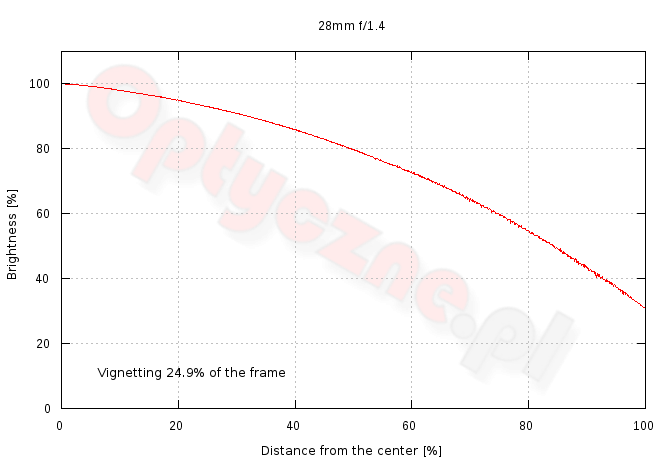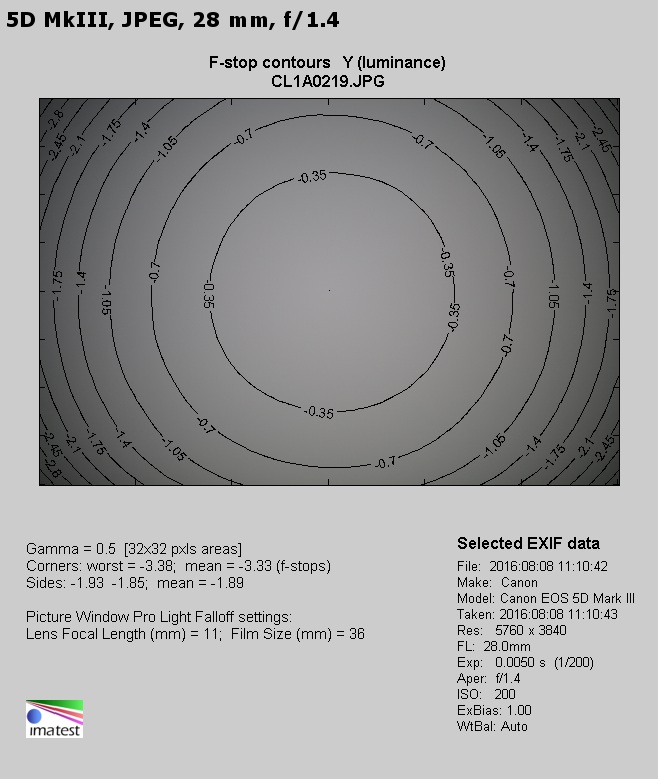Carl Zeiss Otus 28 mm f/1.4
8. Vignetting
| Canon 50D, f/1.4 | Canon 50D, f/2.0 |

|

|
There are some worrisome symptoms like the fact that at the maximum relative aperture the vignetting level reaches 30% (−1.03 EV), a surprisingly high result taking into account the size of the sensor and the physical dimensions of the lens itself. On stopping down the aperture to f/2.0 the brightness loss decreases to 14% (−0.45 EV) and after applying f/2.8 you can eliminate it almost completely (8% and −0.23 EV).
Please Support UsIf you enjoy our reviews and articles, and you want us to continue our work please, support our website by donating through PayPal. The funds are going to be used for paying our editorial team, renting servers, and equipping our testing studio; only that way we will be able to continue providing you interesting content for free. |
- - - - - - - - - - - - - - - - - - - - - - - - - - - - - - - - - - - - - - - - - - - - - - - -
Now let’s check the situation on full frame.
| Canon 5D III, f/1.4 | Canon 5D III, f/2.0 |

|

|
| Canon 5D III, f/2.8 | Canon 5D III, f/4.0 |

|

|
The results of the Otus are unfortunately surprisingly weak. When we saw its size we were almost sure we would praise it in this category for a better performance than that of the rivals. We were wrong. At the maximum relative aperture the light fall-off in the corners of the frame amounts to a huge value of 68% (−3.33 EV). Compare that to the vignetting of the Canon EF 28 mm f/1.8 USM which was 52%, or that of the Nikkor AF-S 28 mm f/1.8G, amounting to 53%.
The light fall-off by f/2.0 still remains very distinct with a result of 48% (−1.90 EV). By f/2.8 it still remains quite noticeable, reaching 26% (−0.84 EV). Only f/4.0 and f/5.6 apertures allow us to call that aberration almost imperceptible as it amounts to 13% (−0.40 EV) and 11% (−0.33 EV) respectively.
Below we present the averaged out values of brightness loss in concentric circles as you move away from the frame centre. The percentage numbers, presented in every picture, state the size of the real surface area limited from above and from the right with a value of 100% and from below by the presented curve. That’s how you know how much light overall is lost due to the vignetting. Still you shouldn’t mix up those percentage values with the ones, given at the beginning of the chapter because they are not directly connected with each other.

 |






